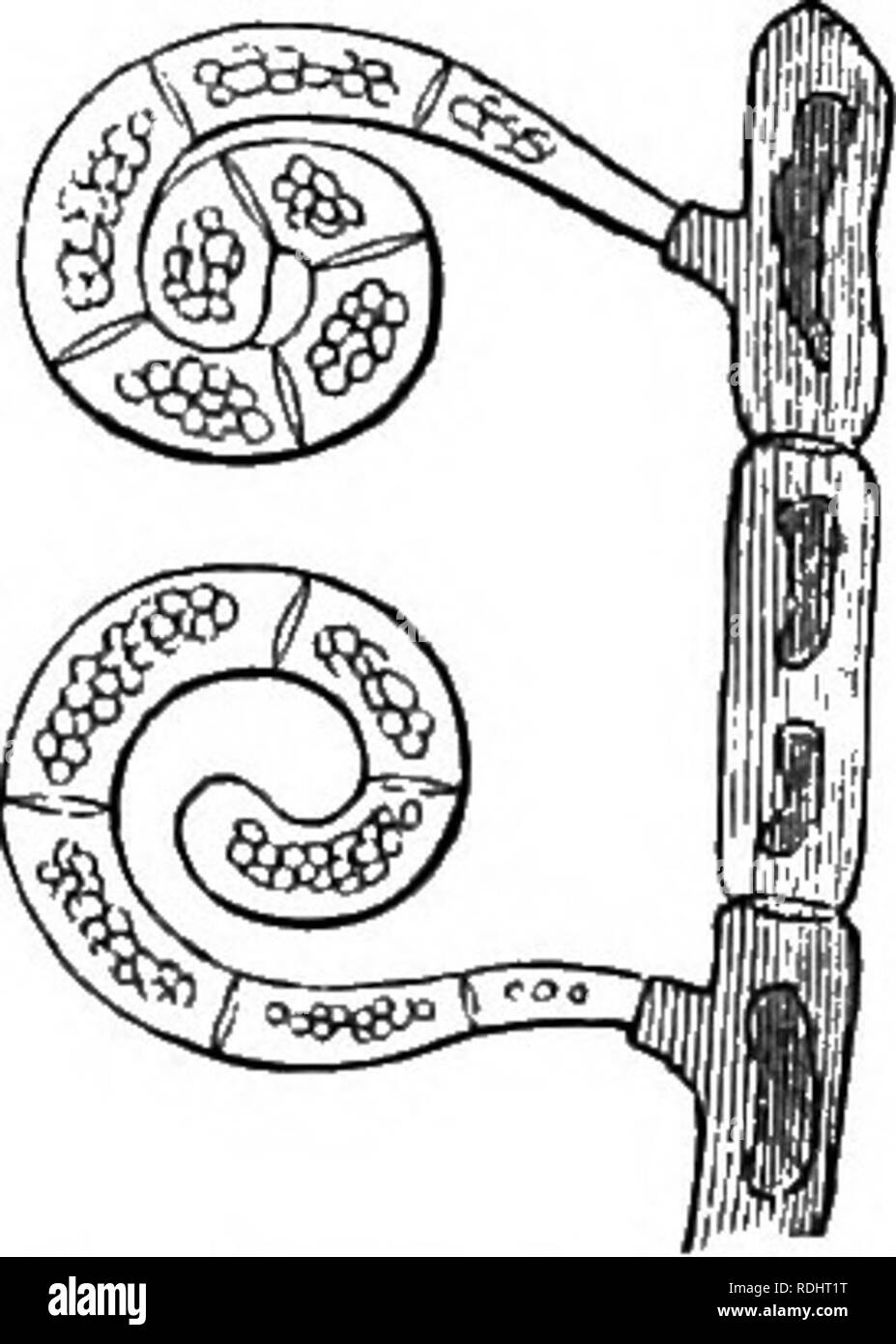. Fungi; their nature and uses. Fungi. THE SPOEE AND ITS DISSEMINATION. 129 form of the spores and their size differ materially, as well as the manner in which they are produced on the threads. In many they are very minute and profuse, but larger and less plentiful in the Dematiei than in the Mucedim.es. The »pores of some species of Helminthosporium are large and multiseptate, calling to mind the spores of the Melanconiei. Others are very curious, being stellate in Triposporium, circinate in Helicoma and Helico- coryne, angular in Gonatosporium, and ciliate in Menispora cili- ata. Some are pr

Image details
Contributor:
The Book Worm / Alamy Stock PhotoImage ID:
RDHT1TFile size:
7.1 MB (237 KB Compressed download)Releases:
Model - no | Property - noDo I need a release?Dimensions:
1335 x 1871 px | 22.6 x 31.7 cm | 8.9 x 12.5 inches | 150dpiMore information:
This image is a public domain image, which means either that copyright has expired in the image or the copyright holder has waived their copyright. Alamy charges you a fee for access to the high resolution copy of the image.
This image could have imperfections as it’s either historical or reportage.
. Fungi; their nature and uses. Fungi. THE SPOEE AND ITS DISSEMINATION. 129 form of the spores and their size differ materially, as well as the manner in which they are produced on the threads. In many they are very minute and profuse, but larger and less plentiful in the Dematiei than in the Mucedim.es. The »pores of some species of Helminthosporium are large and multiseptate, calling to mind the spores of the Melanconiei. Others are very curious, being stellate in Triposporium, circinate in Helicoma and Helico- coryne, angular in Gonatosporium, and ciliate in Menispora cili- ata. Some are produced singly and some in chains, and in some the threads are nearly obsolete. In Peronospora, it has been demonstrated that certain species produce minute zoospores from the so-called spores. The dissemination of the minute spores of the Mueedines through the air is undoubted; rain also certainly assists not only in the dispersion of the spores in this as in other groups, but also in the production of zoospores which require moisture for that purpose. The form of the threads, and the mode of attachment of the spores, is far more variable amongst the Mueedines than the form of the spores, but the la*tter are in all instances so slightly attached to their supports as to be dissevered by the least motion. This aids also in the diffusion of. the spores through the atmosphere. Sporangia are produced in the t.7 . -, , , , , • Fig. 63.—Spores of Helicacoryjie. Physotnycetes usually on the tips or branches of delicate threads, and these when mature dehisce and set free the minute sporidia. These are so small and uniform in their character that they require but a passing mention. The method of diffusion agrees much with that of the Mueedines, the walls of the sporangia being usually so thin and delicate as to be easily ruptured." Other modes of fructification prevail in some species by the production of cysts, which are the result of conjugation of the threads. These bodies are